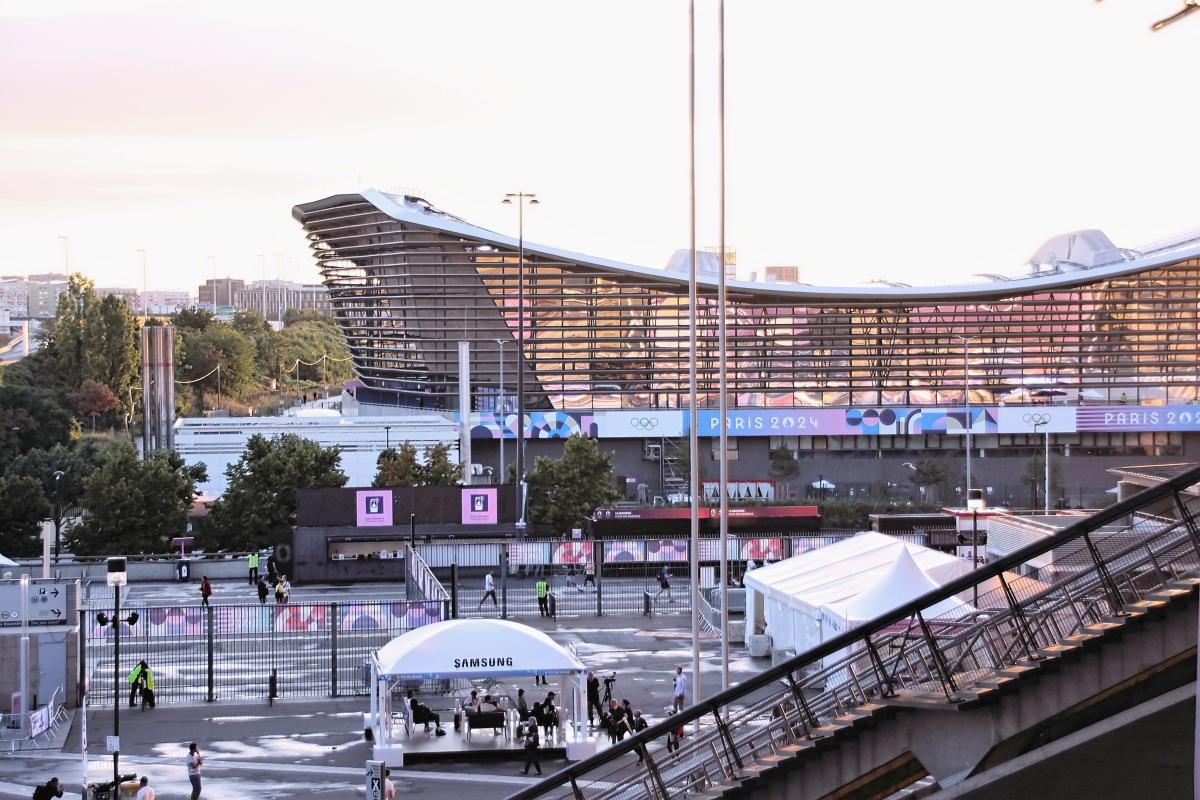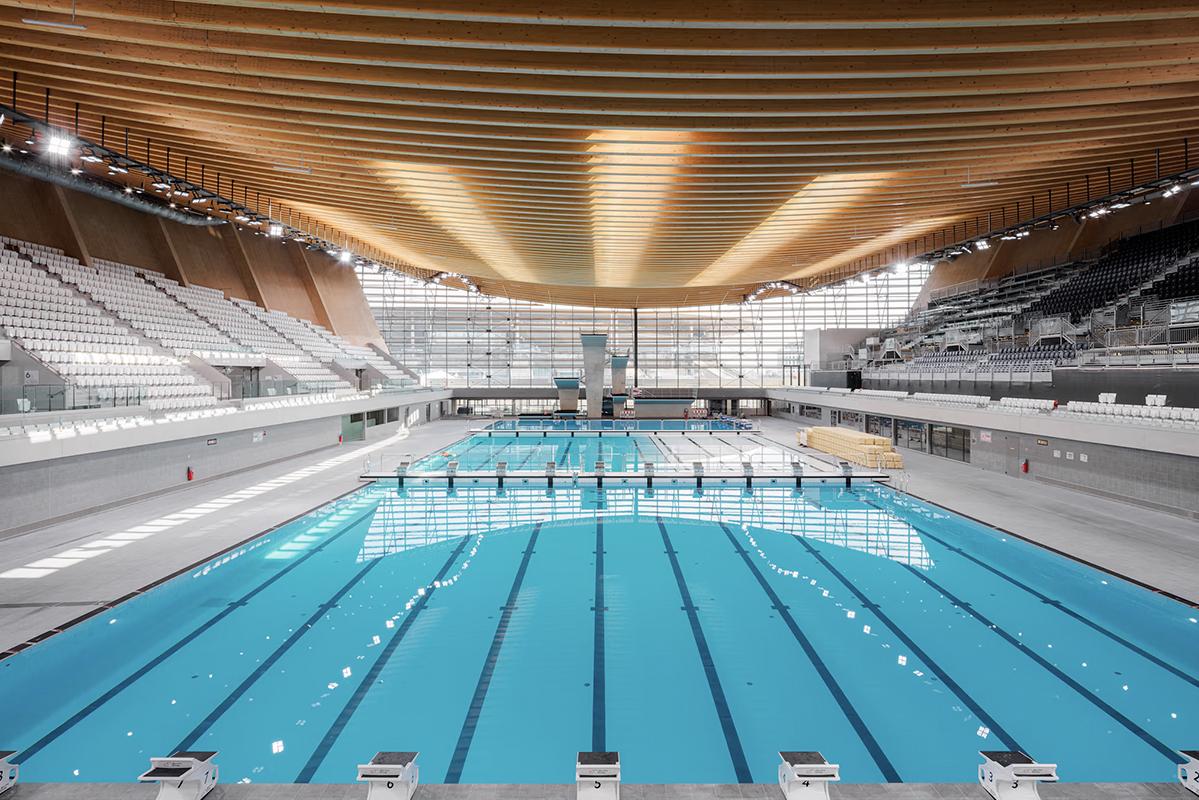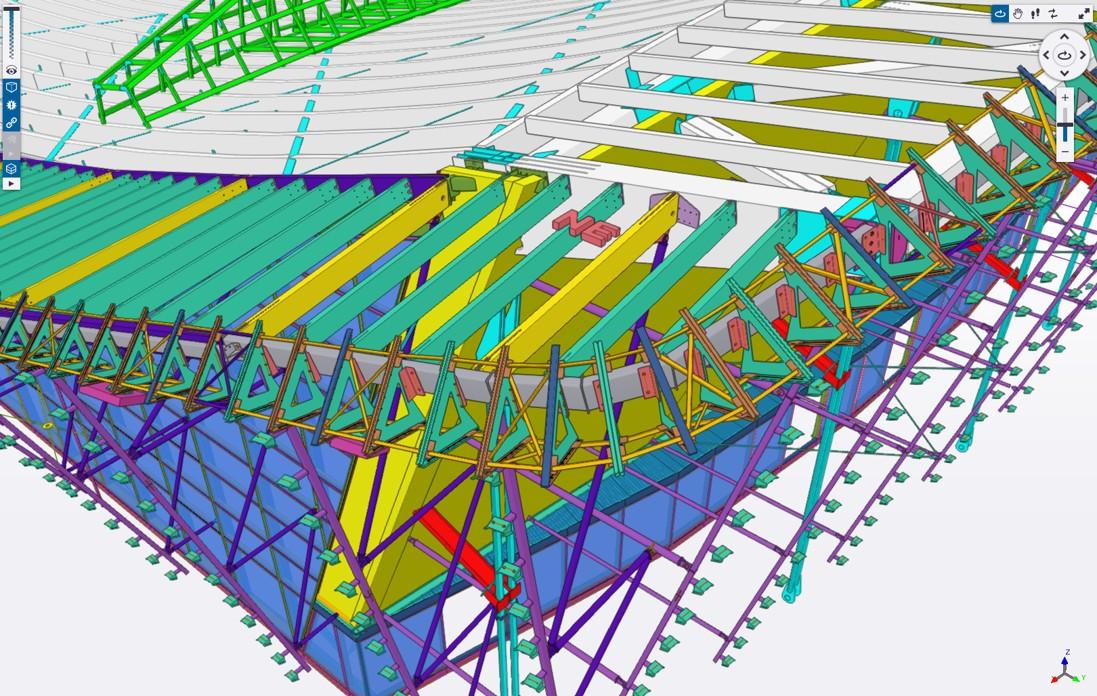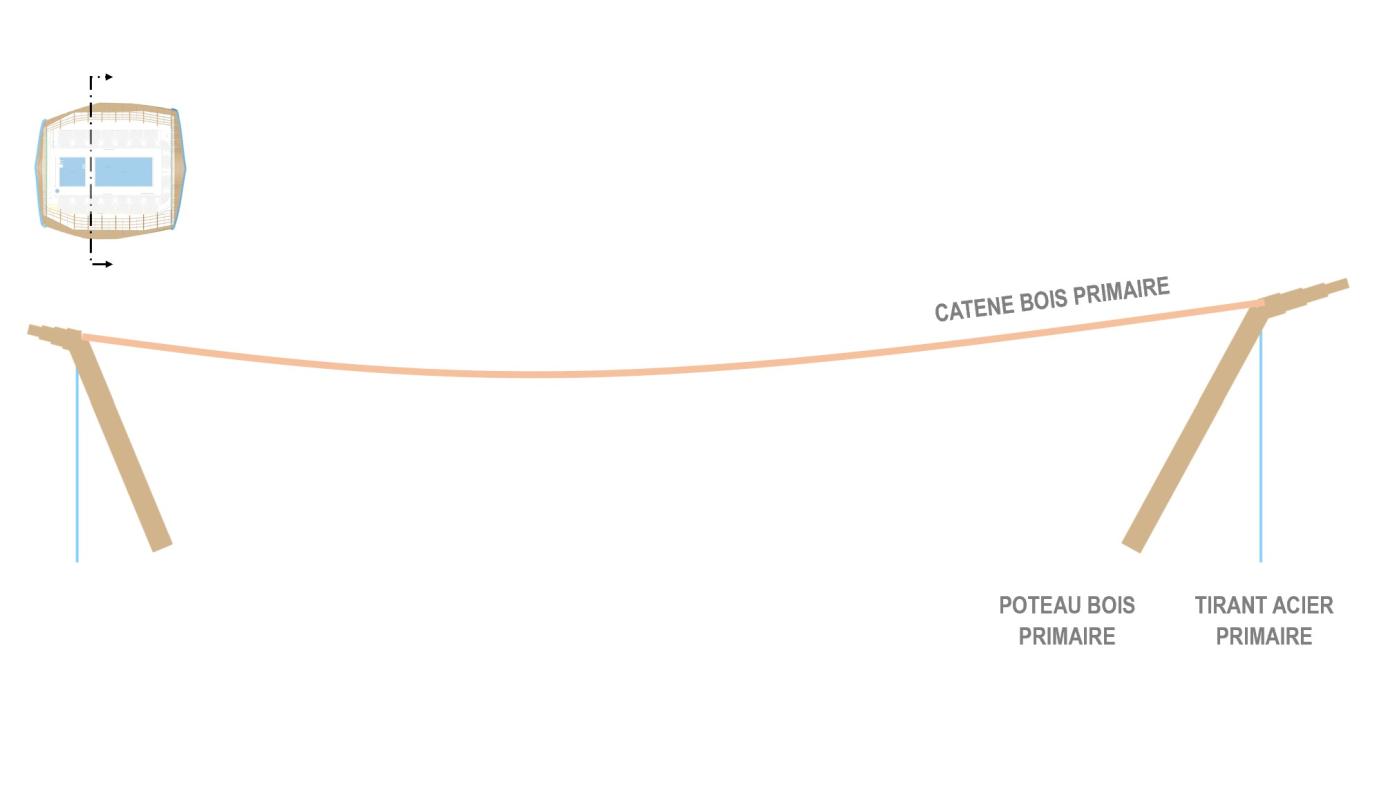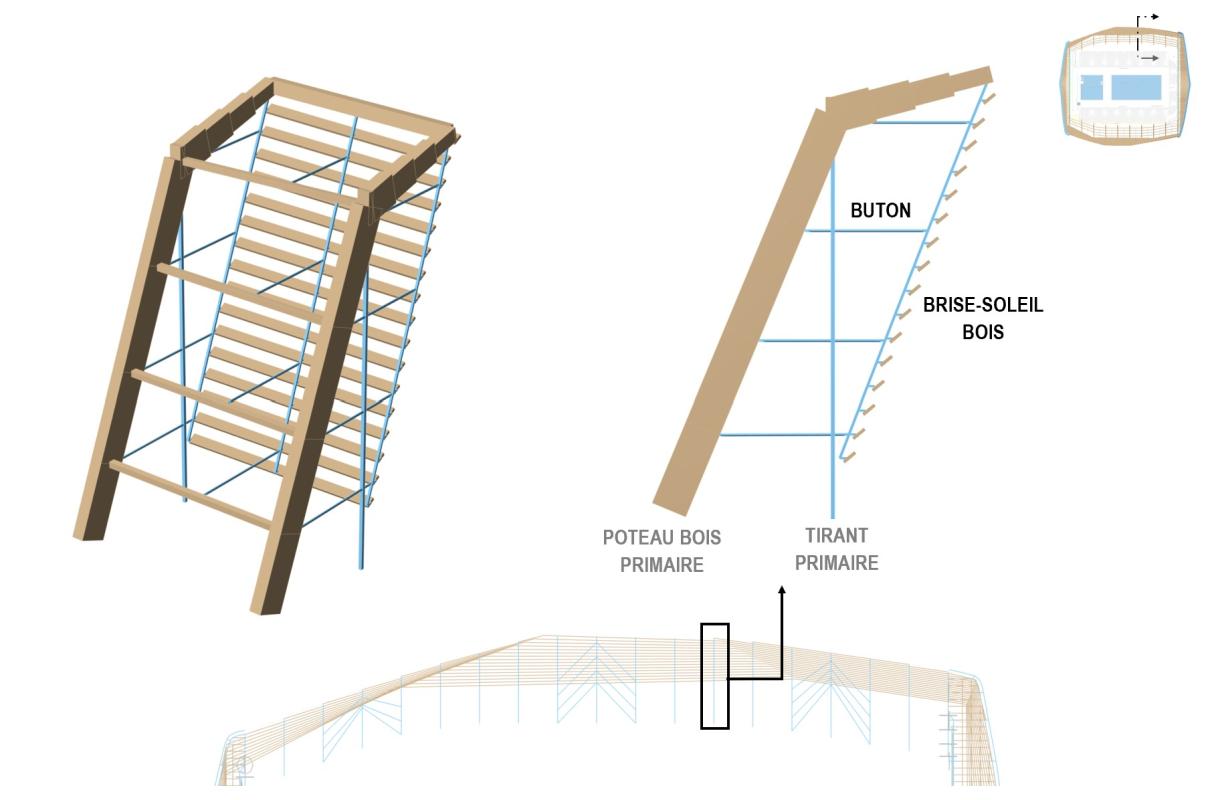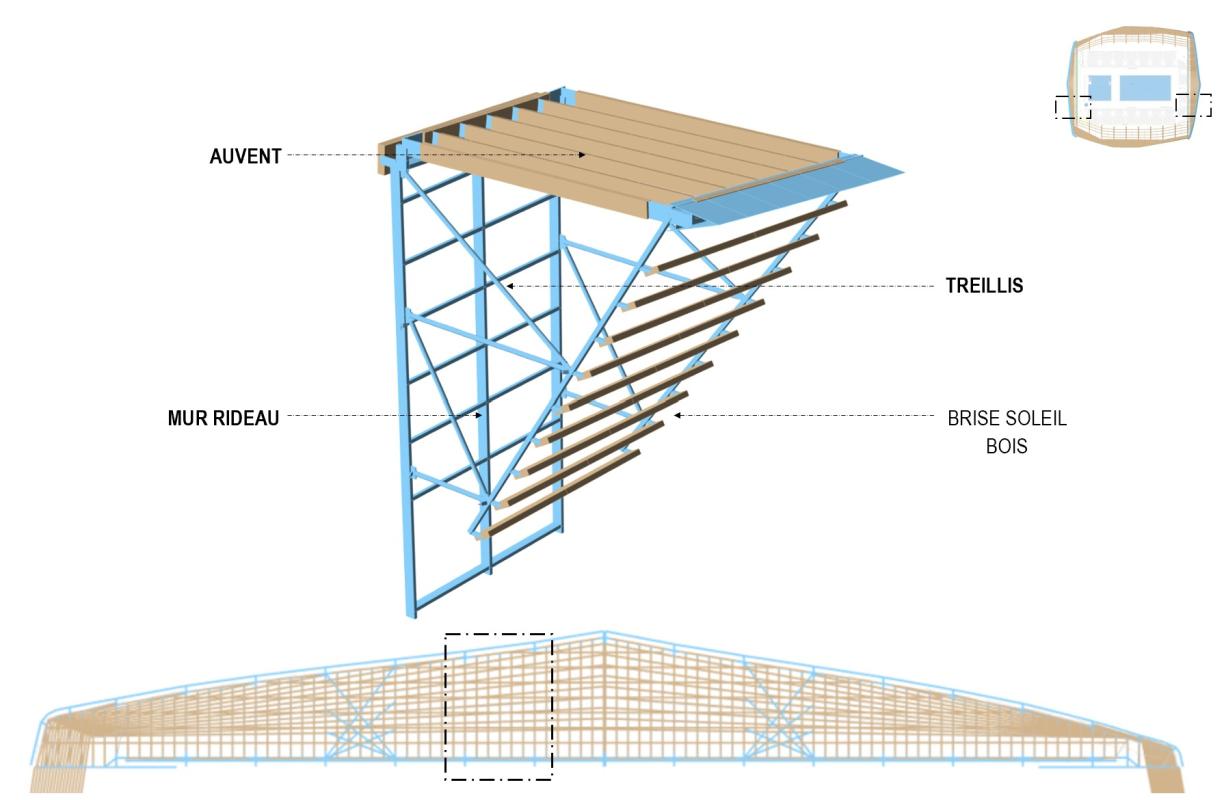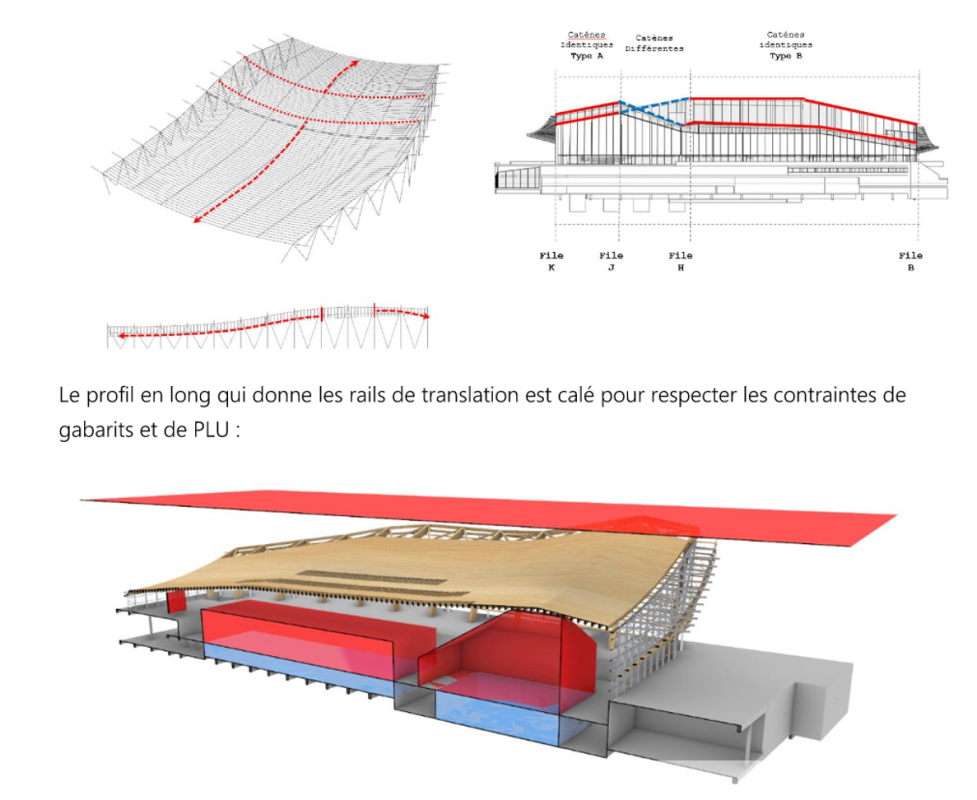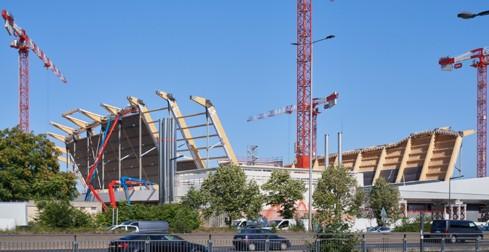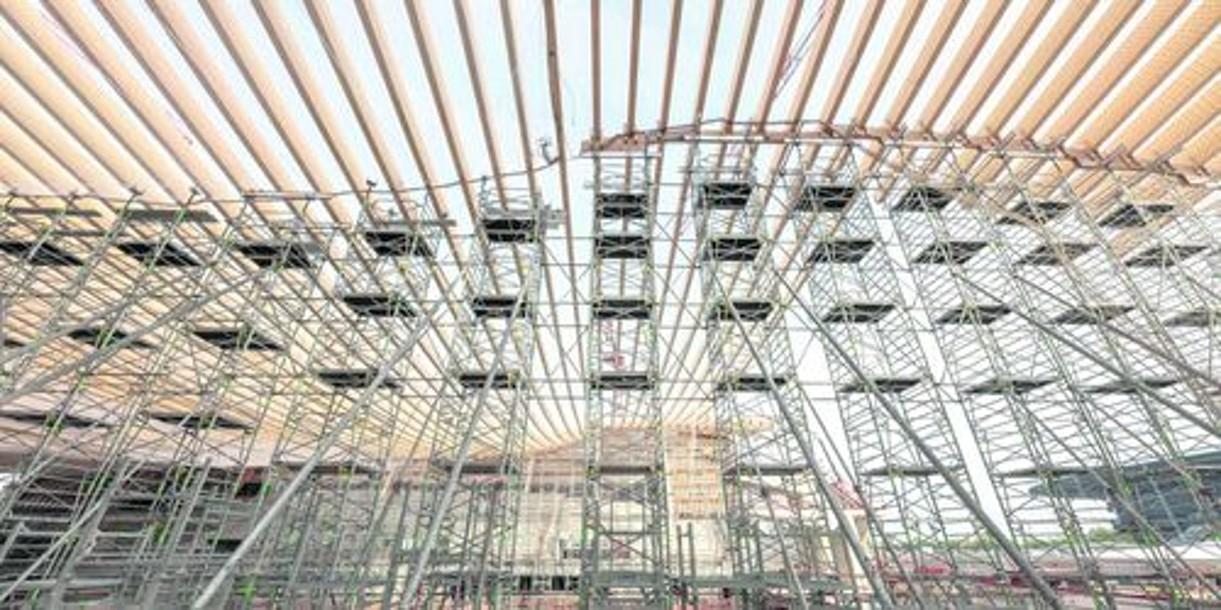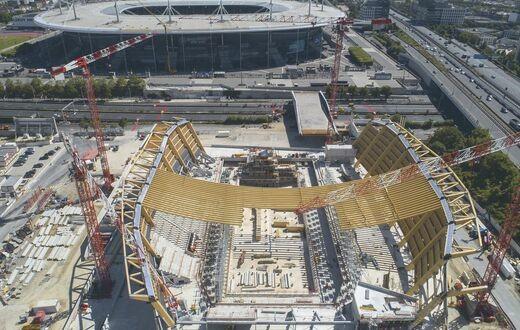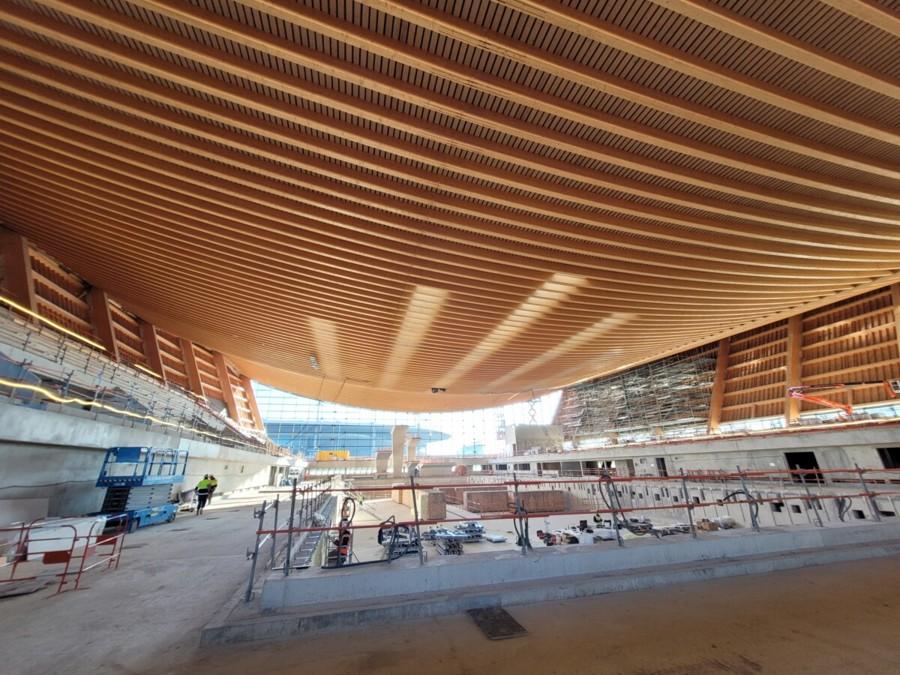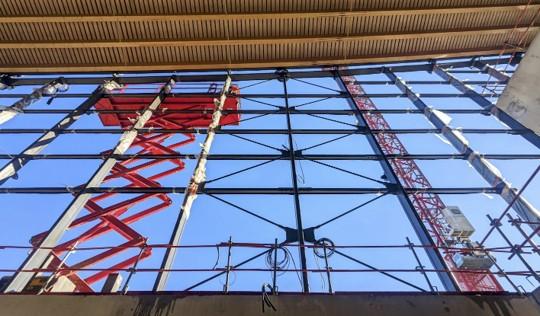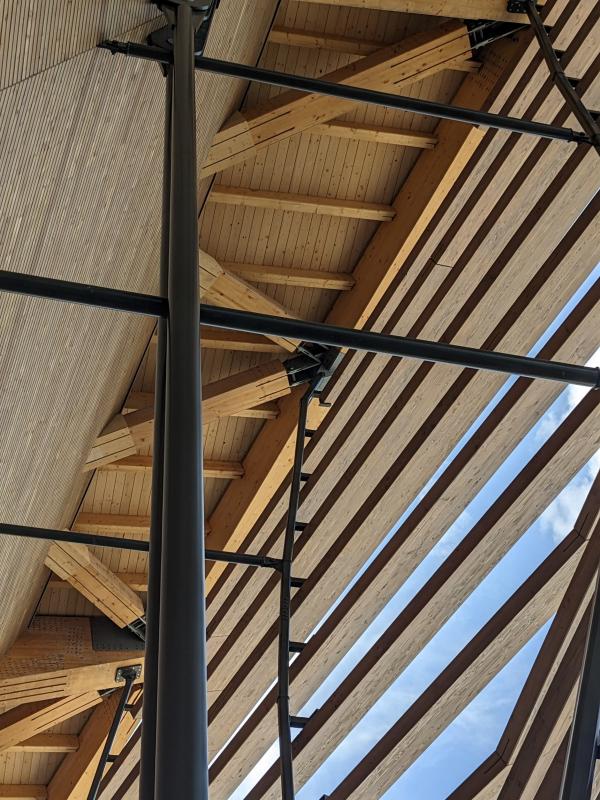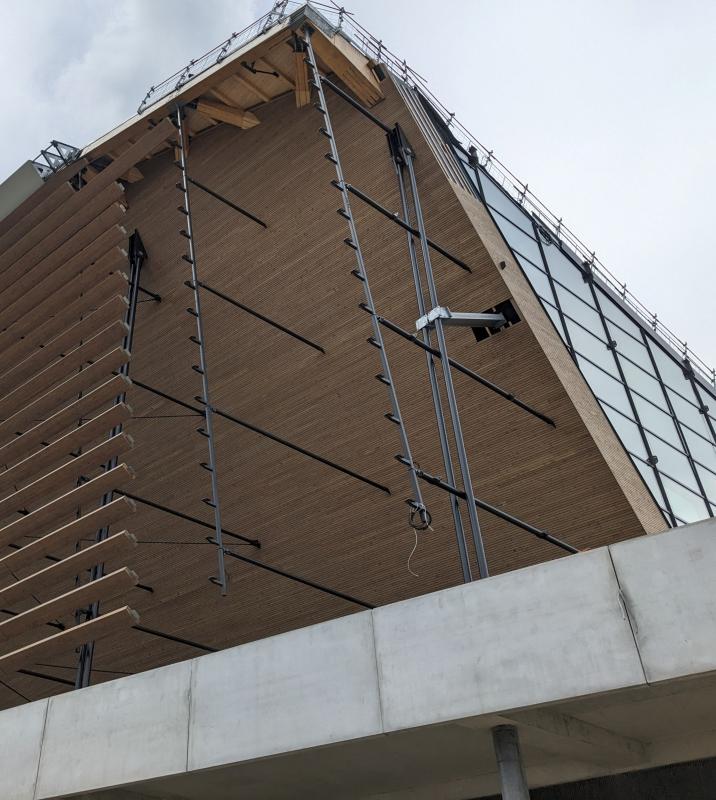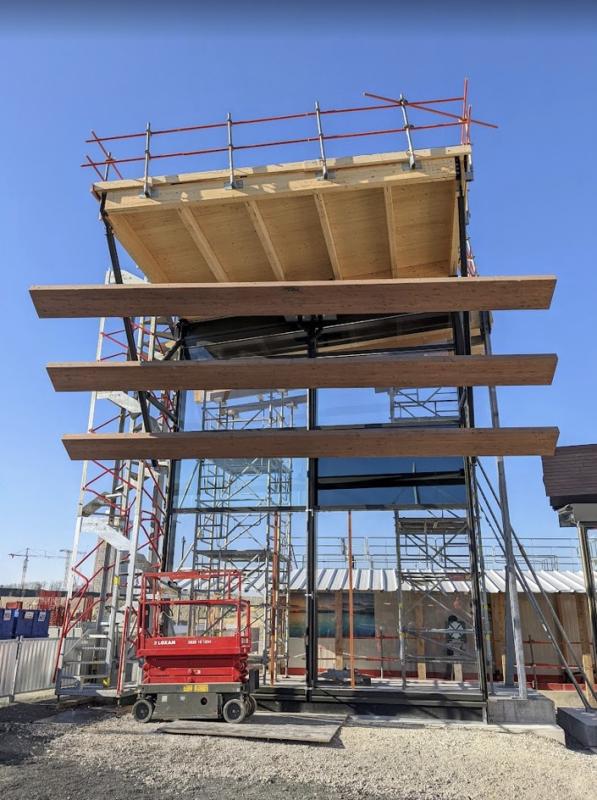Olympic Aquatic Center - Paris 2024
Execution studies of steel curtain walls, sunshade trusses, and wooden canopies.
The structural concept of the project, one of the few new sports facilities built for the Paris 2024 Olympics, is based on a wooden catenary suspended between two outward-leaning wooden columns, anchored at the base and stabilized at the top by external vertical steel tie rods embedded into the building’s concrete foundation. This cross-section is repeated longitudinally across the structure with varying geometries, forming a wave-like roof that shapes the interior volume of the aquatic center. The roof is enclosed at its East and West ends by glazed curtain walls and extended by cantilevered wooden canopies. Wooden sunshade slats are integrated around the entire perimeter of the building.
T/E/S/S was commissioned to perform detailed structural calculations (EXE) of the frameworks and connections, subcontracted by MTech, the company responsible for manufacturing and constructing the façades, trusses, and canopies.
The required slenderness of the curtain wall profiles led to a structural design relying on embedment stiffness between mullions and transoms, which had to be validated on-site and iteratively integrated into a global calculation model. Due to the high flexibility of the wooden catenary structure, the top connections were designed to absorb +/- 300mm of displacement, which was incorporated into both the global model and the connection details. The curtain wall design also accounts for hyperstatic forces generated by movements in the concrete and wooden supports from the main structural works.
The complexity of the trusses supporting the sunshades and canopies arises from their interface between two construction lots: the North and South timber-framed walls and the sunshades themselves, which were outside MTech's scope. Additionally, these elements play a stabilizing role for the canopies, requiring coordination with other contractors while ensuring continuity at the corners, where complex façade interactions needed to be managed.
The canopies, acting as overhangs for the East and West façades, are defined by their complex geometry, following the roof profile at its extremities. Due to both this geometry and the significant displacements of the supporting structures, the force transfer through dowels and fittings was a critical factor in the structural validation of the glulam timber framework.

